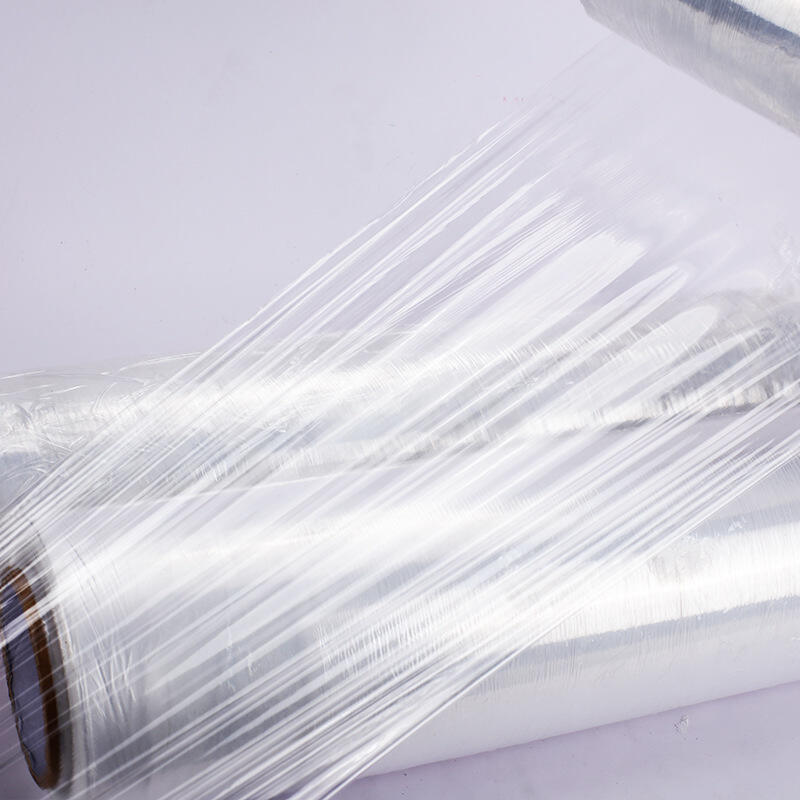Plastic waste has become a pressing environmental issue, and Stretch film plays a significant role in this challenge. You may not realize it, but the stretch film impact extends beyond just packaging. Its widespread use contributes to growing landfill waste and pollution. Addressing this problem requires action. Sustainable disposal methods offer a practical way to reduce harm. By adopting these practices, you can help protect the environment and promote responsible waste management.
Understanding the Stretch Film Impact on the Environment
Contribution to Plastic Waste
Stretch film contributes significantly to the growing problem of plastic waste. You see it everywhere—used in packaging, shipping, and storage. Once discarded, it often ends up in landfills or as litter in the environment. This material does not decompose quickly. It can take hundreds of years to break down, which means it accumulates over time. The stretch film impact on ecosystems is severe. Wildlife can mistake it for food, leading to ingestion or entanglement, which harms animals and disrupts habitats.
The widespread use of stretch film also adds to the global plastic waste crisis. Many businesses rely on it for its durability and flexibility. However, most of this material is used only once before disposal. This single-use nature increases the volume of waste generated daily. Recycling rates for stretch film remain low, even though it is technically recyclable. Contamination and improper disposal make recycling efforts less effective. You can help reduce this waste by understanding its impact and supporting better disposal practices.
Carbon Footprint of Production and Disposal
The production and disposal of stretch film leave a significant carbon footprint. Manufacturing stretch film requires fossil fuels, which are non-renewable resources. Extracting and processing these fuels release greenhouse gases into the atmosphere. These emissions contribute to climate change. Every step of the production process, from raw material extraction to transportation, adds to the environmental burden.
Disposal methods also play a role in the stretch film impact on the environment. When stretch film ends up in landfills, it releases methane, a potent greenhouse gas, as it slowly breaks down. Incineration, another common disposal method, generates carbon dioxide and other harmful pollutants. These processes worsen air quality and accelerate global warming. By choosing sustainable alternatives and reducing reliance on traditional disposal methods, you can help lower the carbon footprint associated with stretch film.
Challenges in Disposing of Stretch Film
Inefficiencies in Traditional Disposal Methods
Disposing of stretch film through traditional methods often leads to inefficiencies. Landfills remain the most common destination for discarded stretch film. However, this approach creates long-term environmental problems. Stretch film does not decompose quickly, so it occupies landfill space for decades or even centuries. This accumulation strains waste management systems and increases the burden on already limited landfill capacities.
Incineration is another disposal method, but it comes with its own set of challenges. Burning stretch film releases harmful pollutants into the air, including carbon dioxide and toxic chemicals. These emissions contribute to air pollution and global warming. Incineration also wastes valuable resources since stretch film is recyclable. By relying on these outdated methods, you miss opportunities to reduce the stretch film impact on the environment.
Traditional disposal methods also fail to address the growing volume of stretch film waste. Businesses and industries generate large amounts of this material daily. Without efficient systems in place, much of this waste ends up in places where it harms ecosystems. You can help by exploring alternative disposal options that prioritize sustainability and resource recovery.
Contamination and Recycling Barriers
Recycling stretch film presents significant challenges, primarily due to contamination. Stretch film often comes into contact with dirt, grease, or other materials during use. This contamination makes recycling difficult because it requires additional cleaning and processing. Many recycling facilities lack the resources to handle heavily contaminated materials. As a result, much of the stretch film intended for recycling ends up in landfills instead.
Another barrier to recycling is the lack of proper sorting. Stretch film frequently gets mixed with other types of plastic or non-recyclable materials. This mixture complicates the recycling process and reduces the quality of the recycled product. You can improve recycling efforts by ensuring that stretch film is clean and separated before disposal.
Limited access to recycling programs also hinders progress. Many communities and businesses do not have convenient options for recycling stretch film. This lack of infrastructure discourages participation and increases reliance on traditional disposal methods. By advocating for better recycling systems and educating others about proper disposal practices, you can help overcome these barriers and reduce the stretch film impact.
Practical Methods to Mitigate Stretch Film Impact
Recycling Solutions
Recycling stretch film offers a practical way to reduce its environmental impact. You can start by ensuring the material is clean and free from contaminants before disposal. Contaminated stretch film often gets rejected by recycling facilities, so taking this step increases the chances of successful recycling. Many businesses now use balers to compress stretch film into manageable bundles. This method simplifies transportation and improves efficiency in recycling processes.
Some recycling programs specialize in handling stretch film. You can research local facilities or partner with companies that provide collection services. These programs often accept large quantities, making them ideal for businesses that generate significant amounts of waste. By participating in these initiatives, you contribute to reducing landfill waste and promoting resource recovery.
Advanced recycling technologies are also emerging. Chemical recycling, for example, breaks down plastic into its original components. This process allows the material to be reused in manufacturing new PRODUCTS. Supporting such innovations helps drive progress in sustainable waste management.
Reduction and Reuse Strategies
Reducing your reliance on stretch film is another effective way to minimize its impact. You can evaluate your packaging needs and identify areas where less material is required. Many businesses have adopted thinner yet durable stretch films. These options maintain functionality while using fewer resources.
Reuse strategies also play a vital role. Instead of discarding stretch film after a single use, you can find ways to repurpose it. For example, some companies collect used stretch film and reuse it for internal packaging or storage. This approach extends the material's lifecycle and reduces waste generation.
You can also explore alternative methods for securing goods. Reusable straps, nets, or blankets offer viable options for certain applications. These solutions eliminate the need for single-use stretch film, helping you adopt more sustainable practices.
Exploring Biodegradable and Sustainable Alternatives
Biodegradable stretch films provide an innovative solution to the plastic waste problem. These materials break down faster under environmental conditions like heat, sunlight, and moisture. By choosing biodegradable options, you reduce the amount of waste that ends up in landfills. You also minimize the long-term environmental harm caused by traditional plastics.
Sustainable alternatives, such as stretch films made from recycled materials, are gaining popularity. These products use fewer virgin resources and support the circular economy. You can look for suppliers that offer eco-friendly options to align your practices with sustainability goals.
Another promising development is compostable stretch film. Unlike traditional plastics, these materials decompose into organic matter, leaving no harmful residues. While still emerging, compostable films represent a step forward in reducing the stretch film impact on the environment.
By adopting these practical methods, you take meaningful steps toward mitigating the environmental challenges posed by stretch film. Recycling, reducing, reusing, and exploring sustainable alternatives all contribute to a cleaner and healthier planet.
Benefits of Sustainable Disposal Practices
Environmental Benefits
Sustainable disposal practices significantly reduce the environmental harm caused by stretch film. When you recycle or reuse stretch film, you prevent it from ending up in landfills or polluting natural habitats. This action helps protect ecosystems and reduces the risk of wildlife ingesting or becoming entangled in plastic waste. By choosing biodegradable or compostable alternatives, you also minimize the long-term damage caused by traditional plastics that take centuries to decompose.
Reducing the production of virgin plastic materials lowers greenhouse gas emissions. Recycling stretch film conserves energy and resources, as it requires less energy than producing new plastic from raw materials. These efforts contribute to cleaner air and a healthier planet. Every step you take toward sustainable disposal helps combat climate change and preserve the environment for future generations.
Business Advantages
Adopting sustainable disposal practices benefits your business in multiple ways. Many consumers today prefer companies that prioritize environmental responsibility. By implementing eco-friendly practices, you enhance your brand image and attract environmentally conscious customers. This approach can set your business apart in a competitive market.
Sustainable practices often lead to cost savings. Recycling programs and reuse strategies reduce waste disposal expenses. Using thinner or recycled stretch films lowers material costs without compromising functionality. Over time, these changes improve your bottom line while supporting sustainability goals.
Regulatory compliance is another advantage. Governments and organizations increasingly enforce stricter waste management and recycling regulations. By adopting sustainable disposal methods, you ensure compliance and avoid potential fines or penalties. This proactive approach demonstrates your commitment to responsible business practices.
Contribution to a Circular Economy
Sustainable disposal practices play a vital role in building a circular economy. In this system, materials like stretch film are reused, recycled, or repurposed instead of being discarded. You help close the loop by ensuring that stretch film waste reenters the production cycle. This reduces the demand for virgin resources and minimizes waste generation.
Recycling stretch film supports the creation of new products from recycled materials. This process conserves natural resources and reduces the environmental impact of manufacturing. By participating in a circular economy, you contribute to a more sustainable and efficient use of resources.
Your efforts also inspire others to adopt similar practices. Businesses and individuals working together can create a ripple effect, encouraging widespread adoption of sustainable methods. This collective action strengthens the circular economy and promotes a culture of environmental responsibility.
"The circular economy is not just about recycling; it’s about rethinking how we use resources and designing waste out of the system." – Ellen MacArthur Foundation
By embracing sustainable disposal practices, you protect the environment, improve your business, and support a global shift toward sustainability. These actions create lasting benefits for both the planet and society.
Stretch film poses significant environmental challenges, from contributing to plastic waste to complicating disposal efforts. You can make a difference by adopting sustainable practices like recycling, reusing, and exploring eco-friendly alternatives. These actions not only protect the environment but also offer long-term benefits for businesses. Start taking actionable steps today. Evaluate your current practices, educate your team, and implement changes that reduce your environmental footprint. Every effort counts in creating a cleaner, healthier planet for future generations. Together, we can drive meaningful change.


